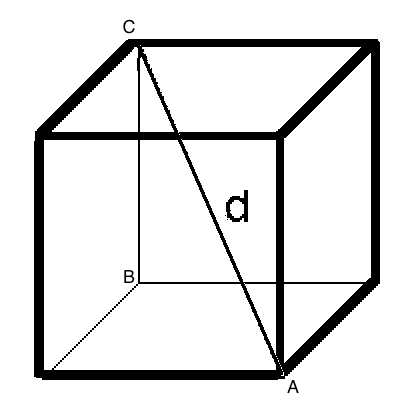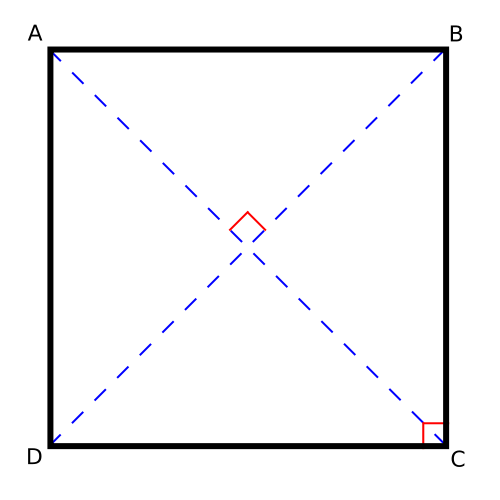To find the diagonal of the cube, there are 2 methods, using a formula or by using the Pythagorus Theorem. So that this explanation is more interesting - and so that you're not just putting numbers into a formula - I am going to tell you how to do the Pythagorus theorem way.

To do this, we need to find the length of the diagonal of the face, in this diagram, from A to B and then we can construct a triangle with AB and BC as the two legs, and CA as the hypotenuse.
We can find the diagonal by using the Pythagoras Theorem.
First, we need to find the length of AB.

a^2 + b^2 = c^2
s^2 + s^2 = d^2
s^2 2 = d^2
s = 5
5^2 2 = d^2
We can now use algebra to find out the length of the diagonal of the square, which is the shorter diagonal of the cube.
5^2 2 = d^2
25 xx 2 = AB^2
50 = AB^2
AB^2 = 50
AB = sqrt50
sqrt50
sqrt50 = sqrt2 xx sqrt(5^2
sqrt50 = sqrt2 xx 5
sqrt50 = 5sqrt2
color(lime)(AB = 5sqrt2
Now we can construct the triangle and find the overall longer diagonal of the cube.
a^2 + b^2 = c^2
AB^2 + BC^2 = CA^2
AB = 5sqrt2
BC = 5 because BC is simply an edge of the cube.
(5sqrt2)^2 + 5^2 = CA^2
Now we can use algebra to find CA
sqrt50^2 + 5^2 = CA^2
The square root and square of 50 cancel each other out.
50 + 5^2 = CA^2
50 + 25 = CA^2
75 = CA^2
sqrt75 = sqrt(CA^2
sqrt75 = CA
sqrt75 ~~ 8.660
75 = 3 xx 5^2
sqrt75 = sqrt3 xx sqrt(5^2
sqrt75 = sqrt3 xx 5
sqrt75 = 5sqrt3
color(blue)(CA = sqrt75
color(blue)(CA = 5sqrt3
color(blue)(CA ~~8.660
And if you wanted to do it the other way, the formula is:
d = sqrt3 xx a
d = sqrt3 xx 5
color(blue)(d = 5sqrt3
Hope this helped. :)




